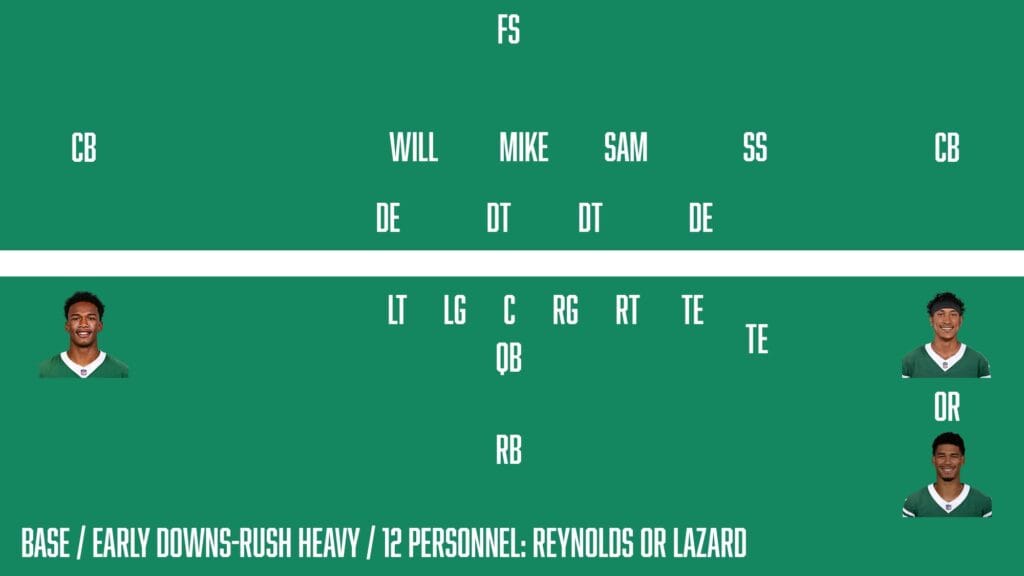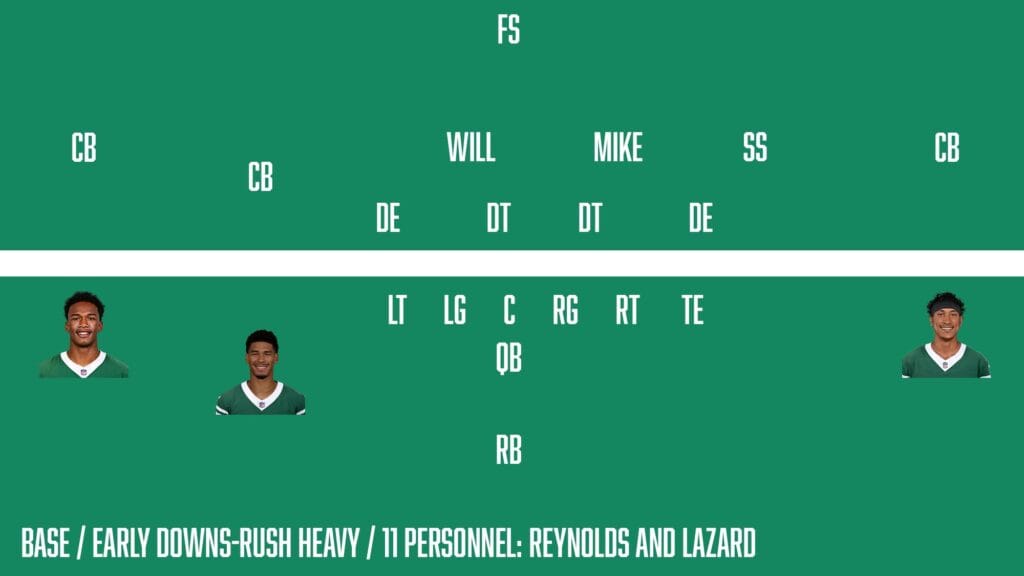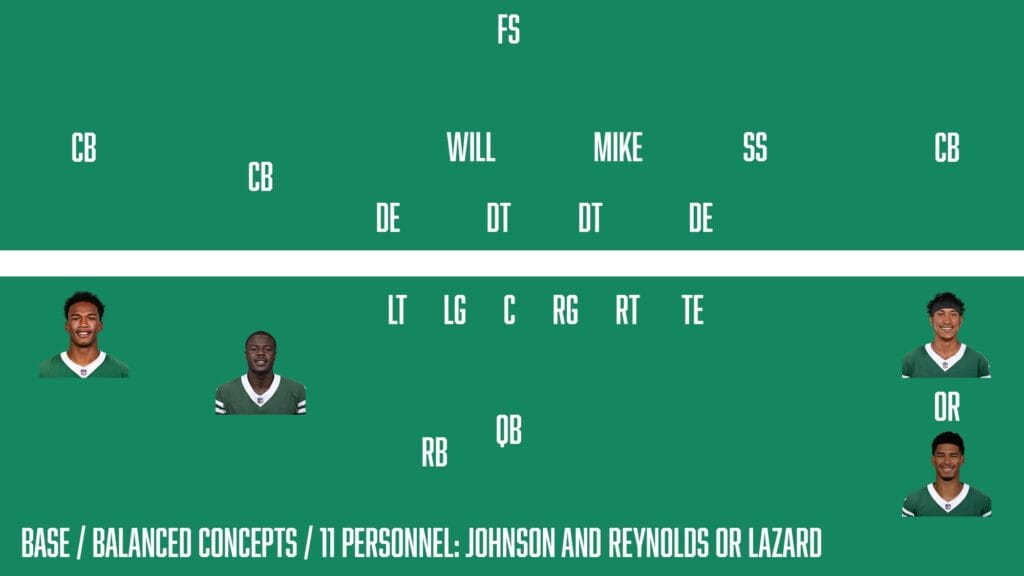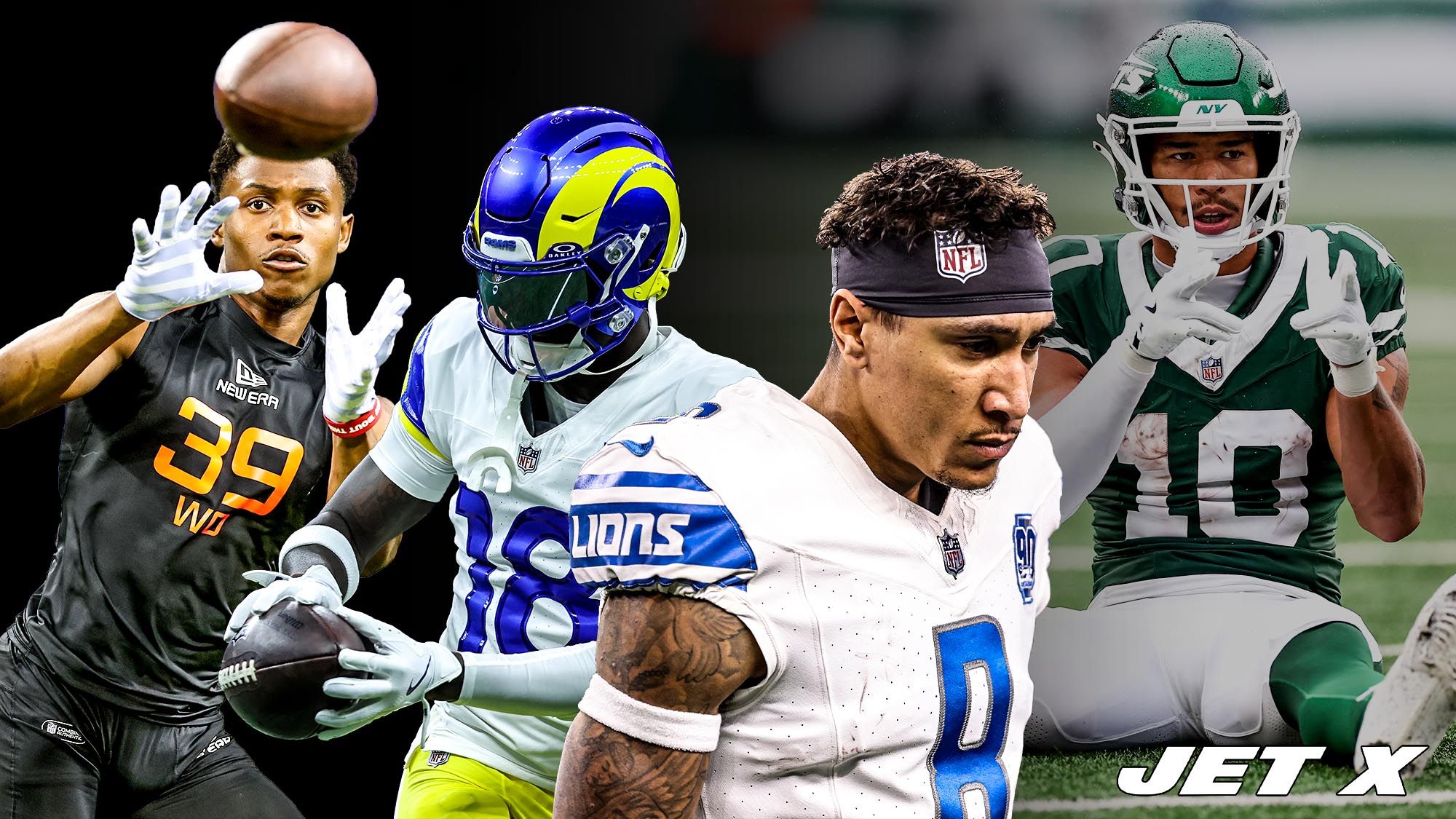Josh Reynolds? Nah. Tyler Johnson? No. Perhaps Arian Smith immediately shocks the senses? Doubtful.
What about veteran Allen Lazard? I’m confident the collective yet silent fan responses are simultaneously fierce enough to telepathically provide the obvious answer through our computer and mobile device screens.
It’s true what they say: The New York Jets don’t currently have a legitimate No. 2 wide receiver.
Beyond Garrett Wilson, uncertainty and confusion reign supreme. So much so that a healthy dose of onlookers were screaming for Tet McMillan or a second-round wideout in the 2025 NFL draft.
Ok, so Aaron Glenn and Darren Mougey provided offensive coordinator Tanner Engstrand with no clear WR2. Instead, a handful of bodies are vying for the role this summer—as it’s sure to become one of the many training camp storylines.
Whether the WR2 situation should even be discussed as a storyline is the real crux of the matter. In actuality, as will be the case in several depth chart spots in the Glenn regime, WR2 is the first example of what this new coaching staff brings to the table …
Versatility and forward-thinking.
Don’t think of WR2 as a competition this summer, at least not from a “winner takes all” perspective. Imagine it rather as a competition involving a few key pieces that form the entirety of WR2.
Base WR2
- Josh Reynolds
- Allen Lazard

For the New York Jets fans who cannot stand a specific individual whose initials are A.L., look away. Provided he’s still on the roster, Allen Lazard (or Josh Reynolds) will be the Jets’ starting wide receiver opposite Garrett Wilson in September.
It has nothing to do with general WR2 capabilities, either, but rather boils down to how the two players fit into this offense’s goals.
Lazard and Reynolds are probably the best run-blockers at the position. Whether it’s a designed Justin Fields run or the more traditional running back rush concept, Engstrand will undoubtedly utilize the best run blockers in his base sets.

For that reason—and nearly that reason only—Reynolds or Lazard receive the starting nod. And hey, for early-down rush attempts out of 11 personnel, both players could be featured.
Route-Running WR2
- Tyler Johnson

When speaking about route-running, Tyler Johnson is the WR2.
Although he’s not particularly fast—running an ultra-unimpressive 4.70 forty-yard dash at the 2019 NFL Scouting Combine—Johnson’s savvy route-running is the only thing that gives him a chance to compete in the NFL.
Expect Johnson to be the WR2 or WR3 in sets that demand a traditional 5-to-7-step drop.
Burner/Jet WR2
- Arian Smith
- Xavier Gipson

Jets head coach Aaron Glenn spoke about Arian Smith and Mason Taylor following rookie minicamp last week, and his words followed an identical pattern to what we’ve heard since he took the job.
In the accountability department, Glenn communicates exactly what he wants out of his players. Moreover, when he and Mougey think about acquiring talent, they seek specific skills for a particular purpose.
First, Glenn’s energy when speaking about his burner of a wideout was apparent.
“Arian (Smith) has some juice,” Glenn said with a monster smile. “God, he can run, he’s bouncy, and he’s a really good athlete. I thought the first day he went out there, and he was really focused on making sure [he saw] through the ball. I think he did a good job catching the ball.”
Although interior defensive tackle is still a major New York Jets depth chart need, it could be argued that speed at wide receiver was the team’s greatest ill. They had nobody who could stretch the field vertically.
With Smith, Engstrand can extend the playbook to take the top off the defense, allowing Fields to work towards Garrett Wilson, Mason Taylor, and Breece Hall with more space underneath and in the intermediate area.
It doesn’t just work vertically, either, via the separation department.
Smith could become the Jets’ top jet-motion weapon off the jump. Xavier Gipson’s 4.42 forty-time at his Pro Day throws him into the jet-motion bucket, but his diminutive stature doesn’t bode well when thinking about vertical concepts.
Yes, expect Smith to be the Jets’ WR2 on passing downs. A case could be made that his value could be invaluable even if he doesn’t attract a single target in a game.
Defenders must respect speed, no matter who the player is. And without that vertical threat, the box the offense is working and passing in is much smaller.
TE and RB
Let’s also not forget about tight end or running back.
With a healthy trio of backs, it should surprise nobody if the Jets use Breece Hall in many passing situations out of the backfield. Plus, Braelon Allen’s north-south, hit-the-hole-hard nature gives him a leg up in specific read-option/RPO scenarios—with Fields working off of that in a contrasting east-west fashion.
Young Mason Taylor should be instantly thrust into the spotlight, despite the rigors for rookie tight ends in this league. It could be Taylor who ultimately snags the second or third-most targets by the end of the 2025 season (behind Garrett Wilson and perhaps Breece Hall).
“Mason is exactly who we thought he was,” Glenn said of his new tight end. “He has dynamic movements. He can really catch the ball. He did a good job catching the ball away from his body. He’s quick to bring it in and get north and south exactly like we want, which we call knife and them. So, listen, I’m happy with both of those men.”
How Glenn finished speaking about his two new rookie weapons is the real rub that crystallizes today’s topic:
“There’s a clear vision of how we’re going to utilize those guys, and I’m glad they’re on our team,” Glenn finished.
What about Malachi?
For those wondering where Malachi Corley is, wonder no more. Corley is a weapon type that can assume more than one specific role—perhaps other than straight-line burner.
If he turns up the technical side of his run blocking, he easily fits into the Reynolds-Lazard bucket. If he reaches a certain point in the route-running area, he can beat out Johnson. (Besides, figuring it out in the Jets’ projected 2025 offense will be much easier than doing so in the Aaron Rodgers-led offense that demands much of receivers.)
He’ll never fit into the Arian Smith-vertical-burner category, yet he can assume jet-motion duties as more of a power-rushing-type wideout (see Deebo Samuel).
For now, he won’t belong to a specific bucket, but he possesses the ability to fit into each.
Whether Reynolds or Lazard are taking run blocking seriously, Johnson is working on the route tree, or Smith and Gipson own the burner concept, the Aaron Glenn regime is all about transparency and communication.
With those clear responsibilities comes accountability, as Glenn alluded to in his introductory presser. With accountability comes specifically-designed roles that are intended to combine a collection of pieces to make a single position as strong as possible.
At this very moment, no New York Jets position exudes that idea more than WR2.
It’s not that the New York Jets wouldn’t utilize a true WR2 in a more traditional sense; they don’t have one right now.
Courtesy of that reality, expect them to take advantage of the substituting ways of the modern league while creating one in the aggregate.
Sure, the New York Jets would graciously accept a true WR2, but creating one with several pieces is as intentional as it gets. At least for now, it’s undoubtedly the next-best solution.

